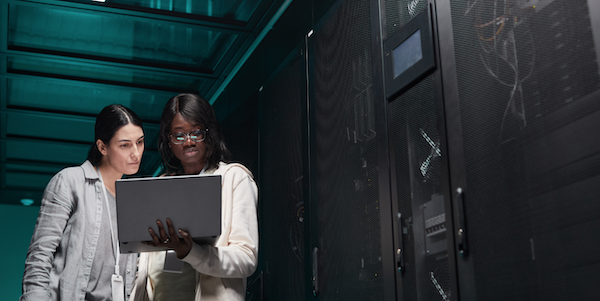Imagine going forward in time 10 years. How will the technologies evolving today change the way we work? What will enterprise resource planning (ERP) in 2028 look like? Production planning for most process manufacturing companies has always been one of the most difficult problems for ERP solutions to solve. There has been much effort over the years to provide functionality to assist planners in making optimum decisions: material requirement planning (MRP), MRPII, theory of constraints (TOC), Kanban and Lean to name a few, and now the latest innovation: demand-driven material requirement planning (DDMRP). But when one solution seems to provide an answer to the planning conundrum, markets, consumers or customers change the rules, the planning horizons shrink and supply chain complexity increases. You may have noticed I used the word “assist” since the planner in the factory of today still provides most of the decision making. Planning is very complex and requires consideration of many independent, yet loosely connected, influences as those who read the blog “A day in the life of Kenny the production planner“ will already have realized.

So, what for the future? Now that we have the ‘digital string’ to connect all aspects involved in the planning process and the possibility for artificial intelligence (AI) to make decisions for us, will the human planner be a thing of the past?
The following is the last in a series of visionary anecdotal stories set in 2028. This is the story of Kenny, Head of Planning at SPS.
KENNY, HEAD OF PLANNING AT SPECIALTY PEPPERY SALADS (SPS)
Kenny glanced at his framed planning MS Excel spreadsheet, which was hanging on the office wall as he looked out over the production fields. Quality drones were buzzing around taking samples and planting drones were seeding, irrigating and fertilizing the fields with incredible accuracy. The harvester drones hovered just above the ground, carefully picking, cleaning and sorting the crop, then feeding their production data directly to Kenny’s console.
Kenny could remember when he had to guess what to make the night before then change it all when the pre-final and final orders arrived. He kind of missed that chaos. Now, a single light flashed indicating WASACO had updated their order and that feed was coming directly from the retailers and depot management systems. This was 24-hour updating. No longer were there six, eight and 10 O’clock cutoffs. Now, everything happened continuously. Another light flashed on the console. It was an update in weather prediction which was followed by a third alert that was picking up a change in social behavior and media coverage. “There must be a big event happening somewhere or perhaps a notorious chef was doing a show on healthy summer foods,” Kenny thought to himself as the predicted output to depot 19 increased by 15 percent.
Kenny could see the LEDs flicker on the various AI units. Weather, social media, population demography, history, everything was being considered as they analyzed and pooled their results. The graphics on the console lit up in greens, ambers and reds in front of Kenny’s eyes, showing him how the predictions were changing. The data transmission icon flashed as the new production plans were being fed to the harvesters, packing plant and distribution vehicles and drones.
Feeling supernumerary, Kenny glanced back at his spreadsheet hanging on the wall and smiled. He still had the final say as he looked at the data, leaned across the terminal and pressed the APPROVE button.
IS THIS STORY SO FAR-FETCHED?
The simple answer is no. This is not far-fetched at all. In fact, most of these individual technologies exist or are developing rapidly due to increases in computing power and drive for digitization
- Planting drones – Already being used for forest planting with one company already having planted more than 25,000 trees across the globe using drones.
- Social media events – Forecasting solutions already handle spikes and trends based on events. In fact, I know of a sandwich factory who change the forecasts for highway service stations based on whether the soccer teams are playing away or at home.
- Artificial intelligence – There is a long way to go before an AI unit replaces the complexity of the human brain and our senses. In areas such as planning though, where it is mostly a computational problem with vast amounts of data to consider, we may be a lot closer than we think.
- Drone harvesters – All be it on a small scale, it happened in September 2017 and the prediction from the industry is for autonomous harvesting by 2024.
- Irrigation, spraying and inspection by drones – Already happening here in the UK.
So, having established that most the solutions in the story will ultimately be possible 10 years from now, it will certainly be a period of high impact change, therefore, I will leave you with a quote from Mr. Bill Gates:
“Drones overall will be more impactful than I think people recognize, in positive ways to help society.”
If you enjoyed this blog, then please look out for my other blogs about ERP 2028.


